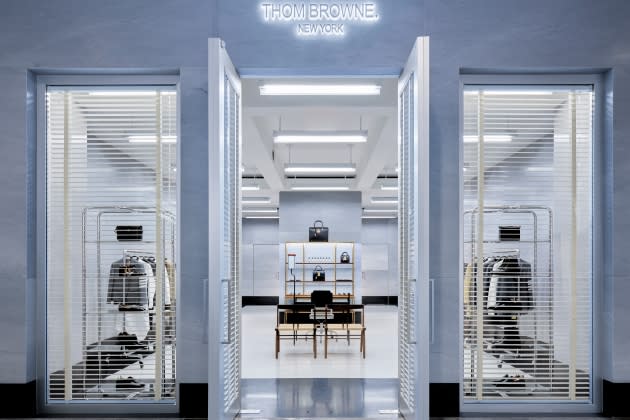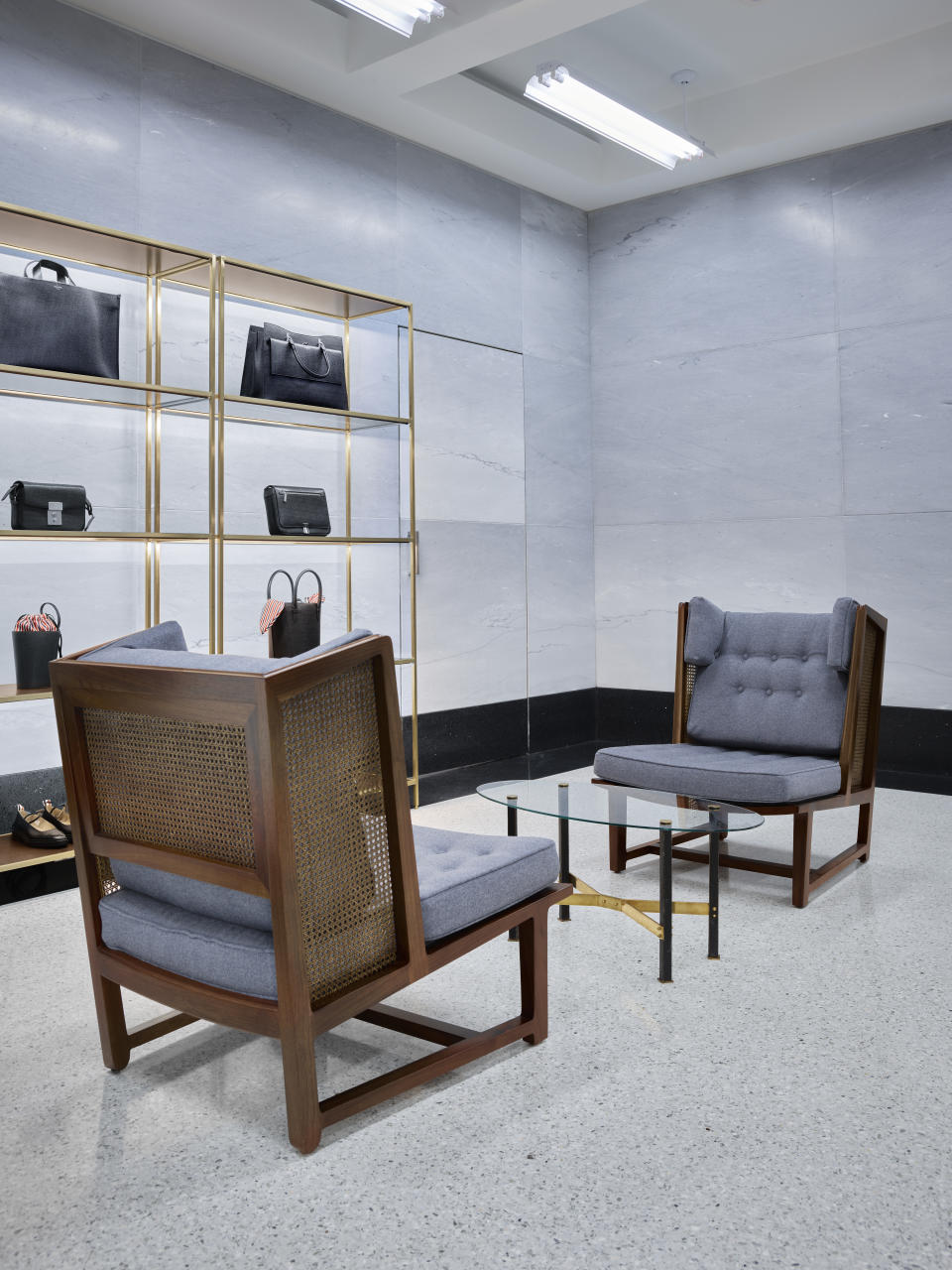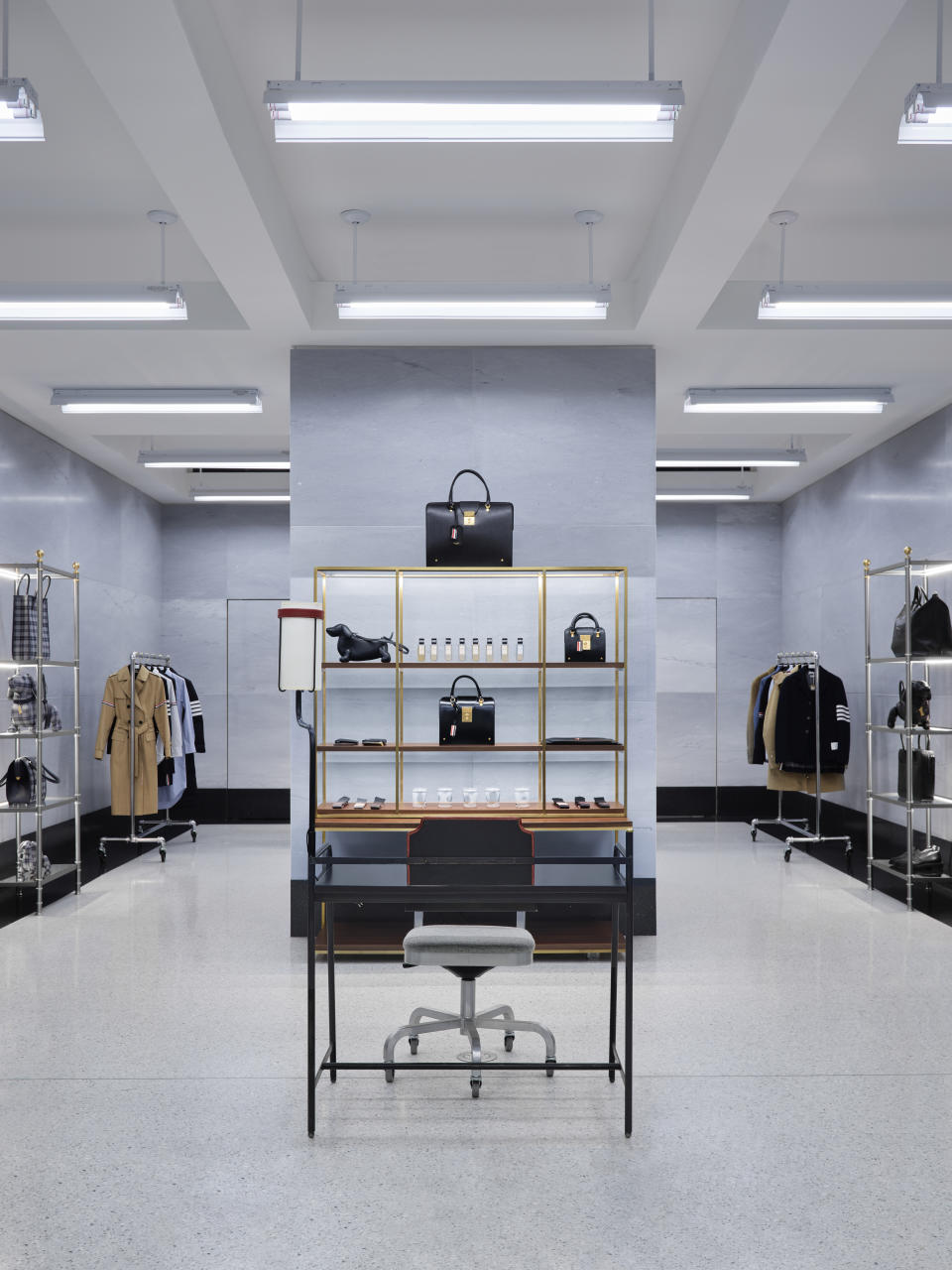Thom Browne Now Primarily a Retailer as Store Rollout Continues
- Oops!Something went wrong.Please try again later.

“We’ve become a retailer.”
That’s how Rodrigo Bazan, chief executive officer of Thom Browne, described the brand’s positioning now.
More from WWD
With the opening of its 103rd retail location this week in Boston, most of the luxury designer brand’s sales come from its own direct-to-consumer efforts.
As a result, the strategy is to continue rolling out retail with a goal to grow to 115 stores by the end of this year and 150 within four to five years, he said. This count includes company-owned freestanding flagships as well as in-store shops. At the end of the first quarter, there were 62 stand-alone stores, according to Ermenegildo Zegna Group, the brand’s majority owner.
Although Thom Browne is based in the U.S., the company only operates six stores in North America: in its hometown of New York City as well as Miami; Costa Mesa, California; Vancouver, and Toronto. Boston is the seventh store to open on this continent and follows a unit in San Francisco that debuted in October in the historic Yeon Building in Jackson Square.
Bazan said that while the retail rollout plan is aggressive, there are not currently any other units planned for the States this year. “But we’re actively looking,” he said. “It’s about finding the right opportunity.”
He said that with any location, the company strives to establish a foothold with local customers before setting down retail roots. That’s what helped lay the groundwork for a successful opening in San Francisco and he’s expecting to replicate that in Boston, where Thom Browne already has a large client base, he said.
Despite the focus on retail, wholesale is still viewed as an important part of the business, but it’s seen more as a marketing and customer acquisition tool than a profit driver.
“We’re in the best 300 stores on the planet, but we don’t use wholesale for volume,” Bazan said. “Last May, we said our aim is to double the number of clients. And the most important way to do that is to expose the largest number of eyeballs to our brand.” And having its brand at high-end retail stores where it can host events and showcase its made-to-measure expertise is a means to that end.
“But that doesn’t prevent us from also opening stores in markets where we wholesale,” Bazan said. “It just means we can grow more in different ways.”
He said the brand’s fragrance, for example, was developed exclusively for its own stores and its eyewear is 50 percent direct-to-consumer with the optical and sunglass range prominently featured in the company’s physical locations.
Bazan said that when he joined Thom Browne in 2016, the company had only 14 stores. But after the start of the pandemic, he unleashed an aggressive retail rollout that increased that number to just under 70 by the beginning of 2020.
Becoming a retailer, however, means the company has a “new set of responsibilities,” Bazan noted. Key to the success of operating retail stores is to ensure there is a strong staff in each location and marketing is targeted to the local community. Ditto for the merchandise that needs to be specific to the customers in each location.
This is all part of the company’s Client Value Management approach that is being executed on a global basis, Bazan said.

The executive had just returned from Asia and he marveled at how similar the stores — and the customers — are all around the world. “The client is the same in China, Japan, South Korea and the U.S.,” he said. “They are looking for quality and timeless product.”
And having its own stores allows the brand to amplify that message, he said. “It’s fascinating to see how similar the stores are on the East Coast, the West Coast, Dubai, Korea,” he said. “And that helps us to stretch ourselves to serve different climates.”
Regardless of their location, all of the stores are profitable, he said. That’s one reason that the company has transitioned ownership of its fleet of stores in South Korea from a franchise model with Samsung to a directly operated retail one, where the stores will be owned by Thom Browne and operated by Samsung. “That will take us to 90 directly operated stores this year,” he said.
One of those is the new Boston flagship at Copley Place.
The 500-square-foot store at 100 Huntington Avenue, Suite D008, was designed in collaboration with architect Flavio Albanese of ASA Studioalbanese and features the brand’s signature midcentury modern style design.
The shop features slat blind-covered windows behind which is a minimalistic “office” with rows of fluorescent tube lighting, black and gray terrazzo floors, and banker gray Bardiglio and Carrara marble walls.
The furniture in the space is all from the same era from American and French designers and includes tables by Jacques Adnet, a desk and chair by Dunbar, and etageres, benches and shelving by Paul McCobb.

The store carries Browne’s men’s, women’s and children’s ready-to-wear, tailoring and accessories in two areas, with dressing rooms in between. There are also vignettes dedicated to Thom Browne eyewear and Vetyver fragrances.
Thom Browne was founded 20 years ago and is now 90 percent owned by Zegna. In reporting its first-quarter earnings last week, the parent company reported revenues for Thom Browne product increased 15.4 percent to 113.3 million euros with particular strength in womenswear and children’s products. Direct-to-consumer sales for the brand rose 25.4 percent to 42.8 million euros, fueled by “sound comparable-store growth and the addition of net 11 stores worldwide compared to the first quarter of last year,” Zegna said. Wholesale revenue for Thom Browne as well was up 9.3 percent in the first quarter.
Best of WWD

